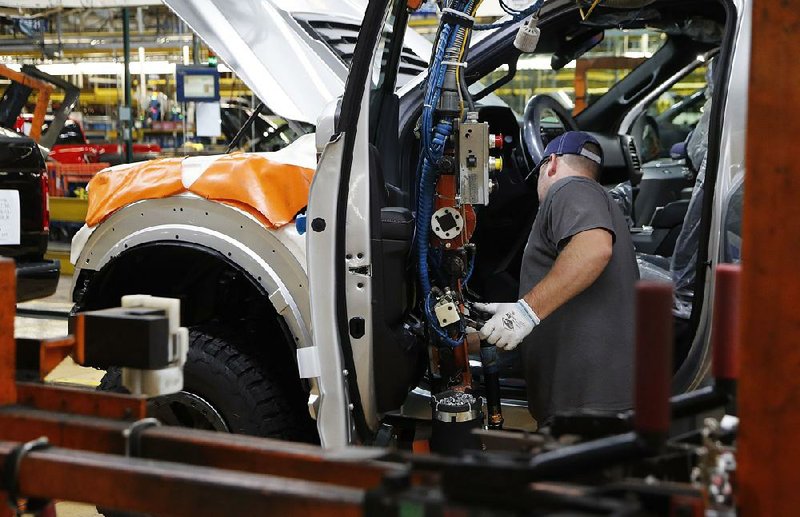WASHINGTON -- American manufacturers grew at a slower pace in October as factories contended with supply disruptions caused by disputes with China, Europe and other trading partners.
The Institute for Supply Management, an association of purchasing managers, said Thursday that its manufacturing index slipped to 57.7 last month -- down from 59.8 in September and the lowest since April. It was the second straight monthly drop.
Still, anything above 50 signals growth, and manufacturers are enjoying a 26-month winning streak.
New orders, production, export orders and hiring grew more slowly. Thirteen of 18 manufacturing industries reported growth last month, led by textile mills and makers of electrical equipment.
American industry is generally healthy, but respondents to the survey suggested that trade disputes are taking a toll. The United States has imposed tariffs on imported steel and aluminum and on about $250 billion in Chinese products, drawing retaliation from U.S. trading partners.
Several companies complained that the tariffs are driving up costs and limiting supplies. Respondents also cited labor shortages and the strains that high demand is putting on their supply chains.
Timothy Fiore, chairman of the institute's manufacturing survey committee, said that "57.7 is not a bad number. But it's not where we had been. We have been bouncing around the top. This may be the first indicator of a softening that may continue."
More than 40 percent of the comments from survey respondents in the past few months have been related to tariffs, Fiore said on a conference call. Companies continue to evaluate where to set up their manufacturing operations, he said.
"Import tariffs and counter-tariffs are the biggest inhibitor to the expansion in manufacturing" and trade strains are "restricting demand," he said.
Manufacturers are also coping with weakening global economic growth and a strengthening dollar, which makes American products costlier in foreign markets.
"Between disruptions caused to the supply chain by tariffs and a strengthening dollar, the factory sector may cool off going forward after an extraordinary run in 2017 and 2018," Stephen Stanley, chief economist at Amherst Pierpont Securities, wrote in a research note. "Nevertheless, even with a weaker-than-expected result in October, for now, the pace of growth for manufacturing remains robust."
Some of the results may reflect an unwinding of gains from previous months when manufacturers were rushing to purchase materials and export their products ahead of U.S. tariffs and counter-levies by China. Trump has threatened to raise the tariffs further and on more products.
Analysts are also monitoring factory reports to assess whether the tax-cut-driven boost to business investment may be fading. Figures last week showed corporate spending on equipment cooled in the third quarter to the slowest pace of gains since 2016. Meanwhile, the job market remains solid, and the October jobs report due today is projected to show manufacturing payrolls climbed.
The economic backdrop for manufacturers remains healthy. Consumer spending on long-lasting manufactured goods was strong during the spring and summer, rising at an annual pace of 6.9 percent from July through September and 8.6 percent from April through June.
Factories are on pace to add more than 250,000 jobs this year, which would be biggest jump in manufacturing employment since 1997.
Information for this article was contributed by Paul Wiseman of The Associated Press and by Shobhana Chandra and Kristy Scheuble of Bloomberg News.
Business on 11/02/2018
